All in the name of love
This week: The machinery Konoba; Ready, steady, move; All in the name of love;
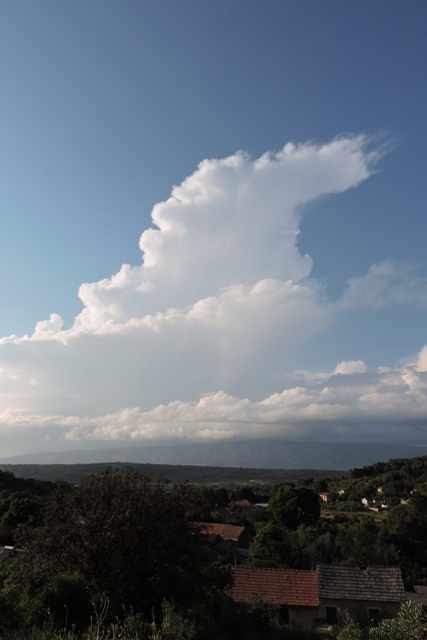
It’s Saturday afternoon again, the wind has dropped and all I can hear through my study windows is bird song.
In the distance there is a Hoopoe calling. A pair of Nightingales are singing their hearts out nearby and a Blackbird is chortling away. In a tree near the window a Blackcap is calling.
The one summer migrant I have yet to hear is the Cuckoo. They may well be here on Stari Grad Plain, but usually I hear them around home too.
I’ve had another busy week, but have at least seen progress. I finished grouting the Konoba floor and gave the new tiles a final polish.
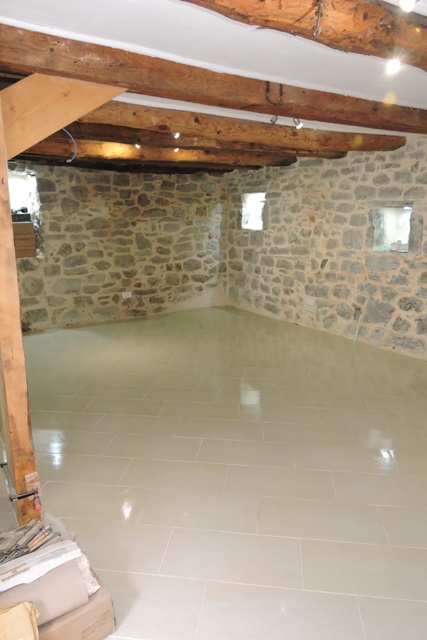
On Friday I was down at Volat, hoping that my order of silicone filler for between the walls and the tiles, had arrived from the mainland.
It hadn’t, however I was able to get some of the other things I needed, so my journey wasn’t wasted.
I am irrigating now every other day and keep seeing the newly emerged insects and butterflies. This young female Katydid has another two moults to go before she gets her wings. Only then will she start looking for a mate.

She will be three centimetres long when an adult. But remaining bright green, she will blend perfectly with the grass where she lives.
All my Madonna Lilies are in flower at the moment. They look beautiful in the bright spring sunlight.
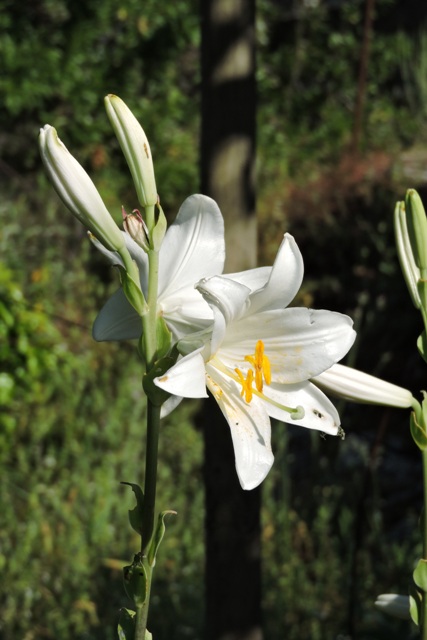
The weather remains variable. When the sun shines, it is hot, but we also have a lot of cloud and there have been thunderstorms nearby. However they completely missed the island.
When the heat finally arrives, we won’t half know about it!
The machinery Konoba
I need somewhere to keep my BMW. You didn’t know I had one? OK, it is the tracked BMW I am talking about not my motorcycle…
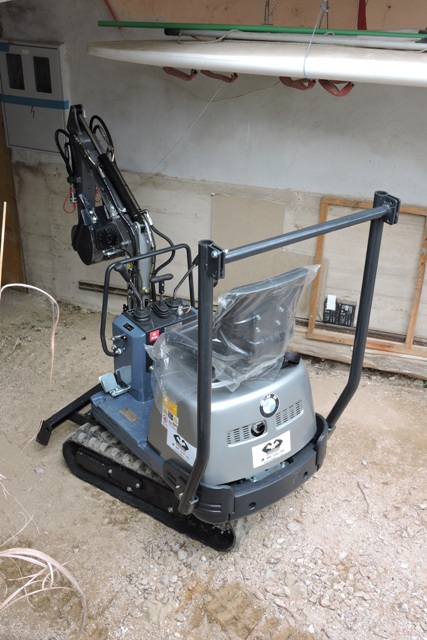
At the moment it is under a plastic sheet in the orchard. However this is hardly the ideal way to keep machinery.
What I realised is that I have largish machines stored in several different places, things like a cement mixer, the mulching machine and the rotary soil riddle.
Now that the Mercedes has gone, I have spent much of the week clearing the Konoba I bought last year.
The Konoba is basicly dry, with just one corner being slightly damp. This is caused because that part of the building is 2 metres under the outside soil level.
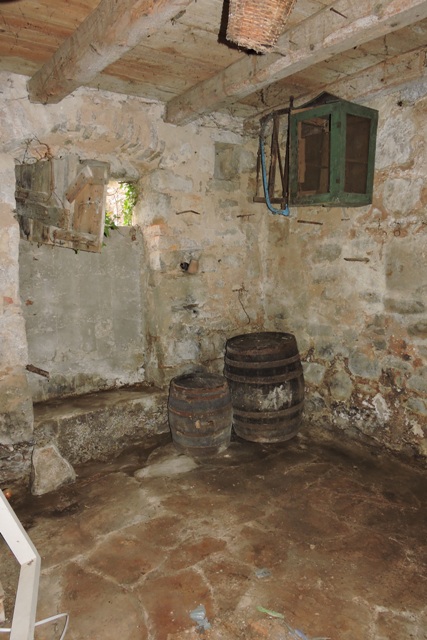
There was quite an amount of wood stored inside, which will burn nicely in my wood stove next winter.
In addition, two manky old wooden tables were cut up in situ. Junk metal has been moved and by sheer chance the local “Steptoe and Son” drove round on Wednesday in their Transit and took it all away.
What I found myself doing one early morning this week, was making a list of everything I need to do to make the machinery Konoba usable.
There are the basic things, like make a window to cover an opening currently stuffed with chicken wire. The doors need replacing to make the place vermin proof, and there will be some demolition too.
A side door has been partially barricaded with concrete with a decrepid stable door at the top, which does not even keep wind blown rain out.
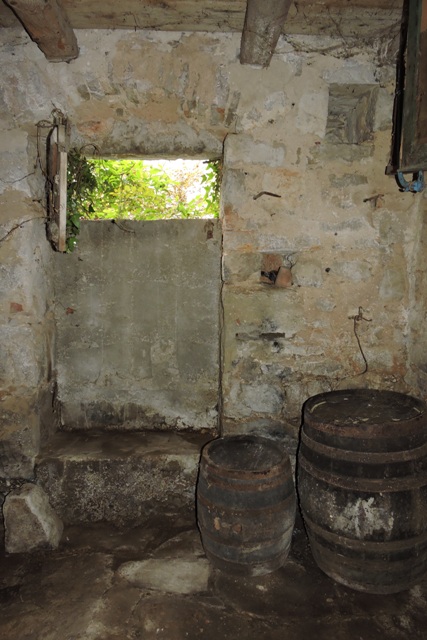
I found three small firkins, an old wooden pail and three large wooden casks. They are well preserved so I will keep them all.
Once the steel hoops have been cleaned, I think I could use them as outdoor tables…
There were also some wooden spiles. Sadly they have all been eaten by wood worm.
I have debated whether to soak them in insecticide, but they are too far gone and only fit for the wood stove.
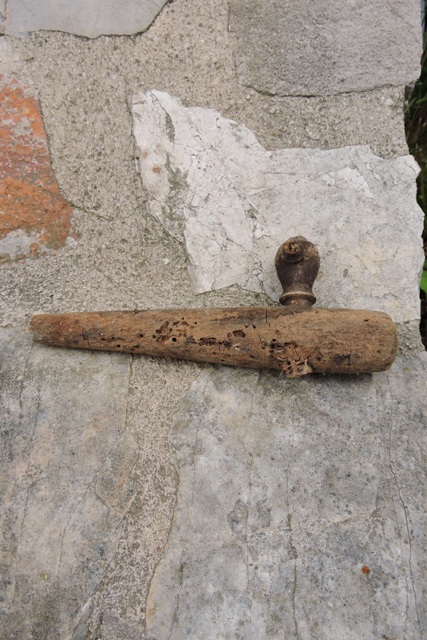
Ready, steady, move
Cleaning seventy plus years of dust and debris out of the Konoba has not been pleasant.
At least I didn’t find any rats or mice inside, despite the ample number of openings where they could have got in.
It was just nice to change out of work clothes and shower at the end of each day.
I bought some lengths of 4 metre wide polythene sheeting at Volat and when all the cleaning was finished, I started laying them on the Konoba floor on Friday.
There is no damp proof membrane in the floor, in some places it is just earth and in others, it has stone flags. The floor wasn’t especially damp, but I could tell where it was bare earth that the soil was moist.
I also found a couple of large slugs and they only live where there is damp or moisture.
With the polythene on the floor, I then laid some dry Euro pallets on top.

On these I have already put some of my storage items. I have things like central heating radiators, purchased in anticipation of the lounge being built.
However I am still waiting for planning approval for the building work.
There are a number of other things which I have in various stores that I would like to centralise in one place. Here I am thinking of building materials and large tubs of paint, amongst the items I want to keep off the floor.
I will move these in next week.
There were two old window frames and when I measured the largest, it is exactly the right size to replace the wooden stable door.
I will need to make some adjustments, and especially find a way of hanging it, but even so it will be a lot easier than having to build a completely new window from scratch.
Apart from the old Mercedes, I haven’t found anything of really significant value. More it is the detritus of years of use as a place where wine was made and olive oil was stored.
All in the name of love
You seldom see Guava fruit for sale in your local supermarkets, but occasionally you might see Guava juice or Guava nectar for sale. If you do, try some!
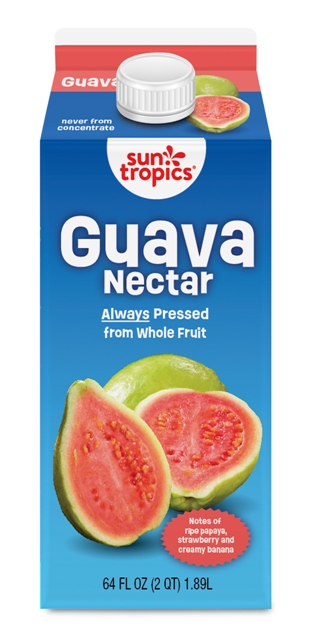
The Guava, Psidium guajava, is native to sub-tropical central and South America, so trying to get it to grow here in Dol is difficult.
I have had my tree for six or seven years and initially it was against a sheltered south facing wall. It survived, just, but that was all.
When I built the polytunnel, I made sure I enclosed it inside the more protected climate. Ever since it has thrived and flowered.
Last year it flowered profusely, but none of the blossom set fruit, so that set me on a bit of research into the Guava.
There are several varieties, often described as the Lemon or apple Guava, Pineapple Guava (actually a Fejioa) and the Strawberry Guava. My tree is a lemon/apple, but I have two Fejoia from New Zealand growing and flowering outside.
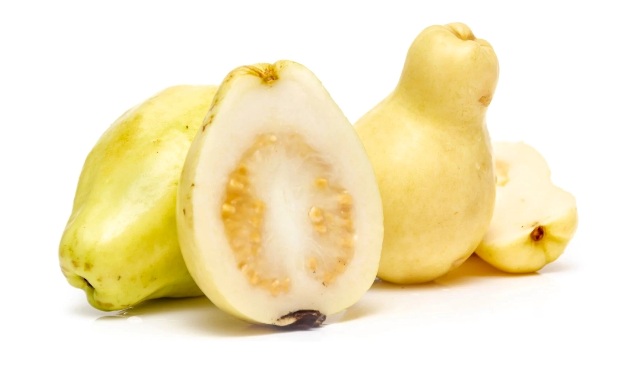
My research indicated that the Guavas in the wild are pollinated by honey bees.
In my polytunnel, I have a lot of insects, but no bees. With a door at each end, but protected by shade netting, some adventurous insects can and do get inside, but bees do not seem to be able to.
This week as the Guava comes into blossom, it is covered from top to bottom with flower buds.
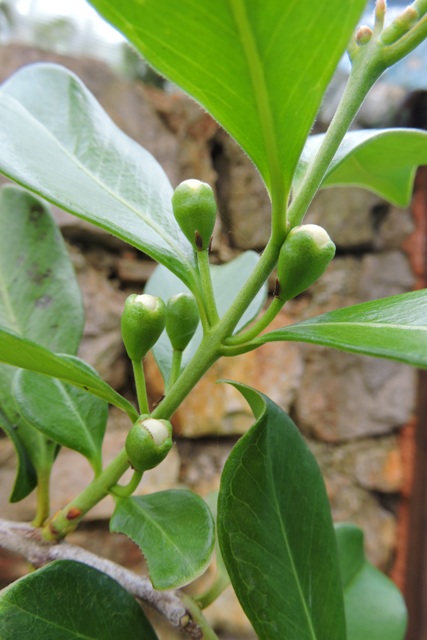
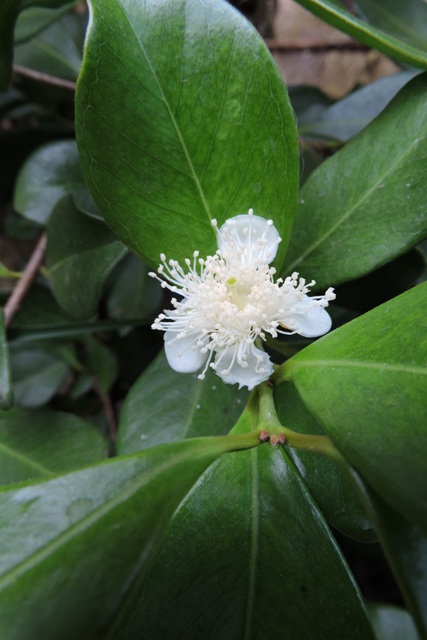
When I was in Stari Grad this week, I called at the local stationers and bought a soft paintbrush with an eye to doing some manual pollination of the flowers.
Looking on-line, there are dozens of videos about pollinating Guavas, even when they are grown outside, so I am guessing that this is a common problem.
Getting up early and using the fine paintbrush to delicately brush the pollen bearing anthers, and then transferring the almost invisible pollen grains to the single stigma in each flower relaly is a labour of love!
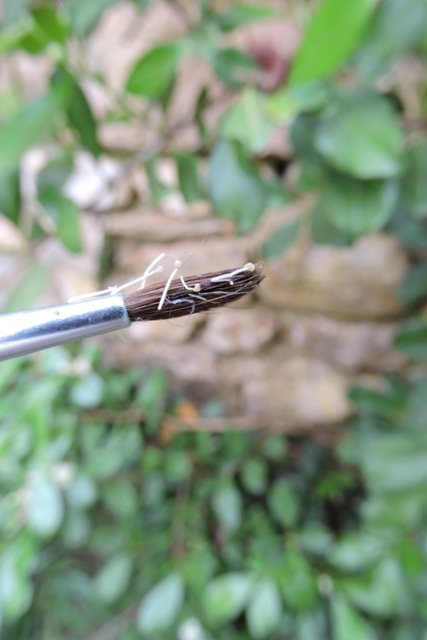
You have to have a very steady hand to delicately brush the newly opened flowers, and an even steadier hand to then move to the single delicate stigma – and that is when you can see it (even with glasses!).
Because the flowers last only around a day, I need to do this job every morning for the next week or so.
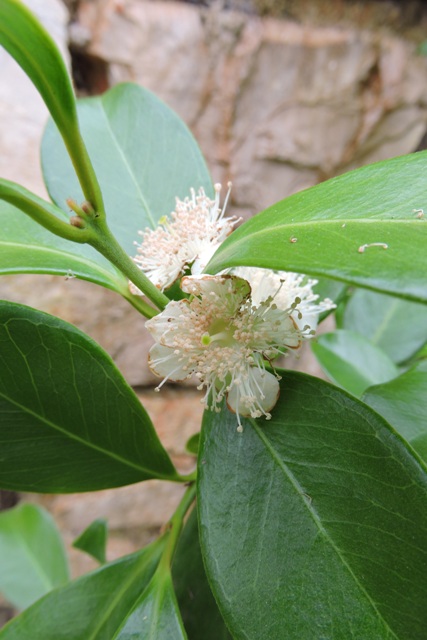
It will be a little while before I discover whether my efforts have paid off and some of the flowers have been successfully pollinated. However I hope that there just might be some fruit later in the year… NCG